
It allows to keep PV going, with more focus towards AI, but keeping be one of the few truly independent places.
-
HDMI Forum, Inc. today announced the upcoming release of Version 2.1 of the HDMI Specification. This latest HDMI Specification supports a range of Higher Video Resolutions and refresh rates including 8K60 and 4K120, Dynamic HDR, and increased bandwidth with a new 48G cable. Version 2.1 of the HDMI Specification is backward compatible with earlier versions of the Specification, and was developed by the HDMI Forum’s Technical Working Group whose members represent some of the world’s leading manufacturers of consumer electronics, personal computers, mobile devices, cables and components.
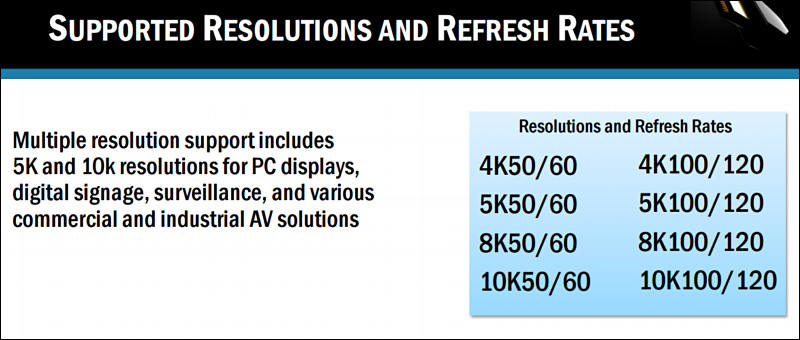
“This new release of the Specification offers a broad range of advanced features for enhancing the consumer entertainment experience, as well as providing robust solutions to the commercial AV sector,” said Robert Blanchard of Sony Electronics, president of the HDMI Forum. “This is part of the HDMI Forum’s continuing mission to develop specifications for the HDMI eco-system that meet the growing demand for compelling, high-performance and exciting features.”
HDMI Specification 2.1 Features Include:
- Higher Video Resolutions support a range of higher resolutions and faster refresh rates including 8K60Hz and 4K120Hz for immersive viewing and smooth fast-action detail.
- Dynamic HDR ensures every moment of a video is displayed at its ideal values for depth, detail, brightness, contrast, and wider color gamuts—on a scene-by-scene or even a frame-by-frame basis.
- 48G cables enable up to 48Gbps bandwidth for uncompressed HDMI 2.1 feature support including 8K video with HDR. The cable is backwards compatible with earlier versions of the HDMI Specification and can be used with existing HDMI devices.
- eARC supports the most advanced audio formats such as object-based audio, and enables advanced audio signal control capabilities including device auto-detect.
- Game Mode VRR features variable refresh rate, which enables a 3D graphics processor to display the image at the moment it is rendered for more fluid and better detailed gameplay, and for reducing or eliminating lag, stutter, and frame tearing.
The new specification will be available to all HDMI 2.0 Adopters and they will be notified when it is released early in Q2 2017.
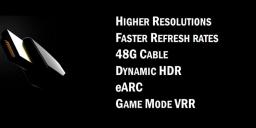
 sample189.jpg800 x 374 - 30K
sample189.jpg800 x 374 - 30K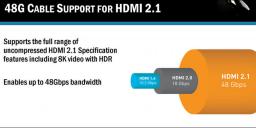
 sample193.jpg800 x 390 - 44K
sample193.jpg800 x 390 - 44K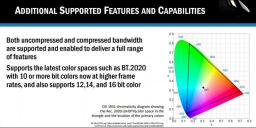
 sample192.jpg800 x 398 - 69K
sample192.jpg800 x 398 - 69K
 sample191.jpg800 x 340 - 57K
sample191.jpg800 x 340 - 57K -
Given that as of today, 18 Gbit/s aka "600MHz" capable HDMI cables are available in lengths to no more than 3 meters (and no manufacturer claims to be able to build longer ones that reliably work), I wonder what lengths of "48G"-cables will be offered.
I for one am not willing to place my video source next to the TV.
-
One of solutions is active cables with small amplifier.
-
Sure, but in the long run every cable standard that required active components didn't become a wide success for the simple reason that this makes cables expensive and even more prone to defects (due to the additional electric components and their possible incompatibilities at both ends).
-
Specification released
HDMI Specification 2.1 Features Include:
- Higher video resolutions support a range of high resolutions and faster refresh rates including 8K60Hz and 4K120Hz for immersive viewing and smooth fast-action detail. Resolutions up to 10K are also supported for commercial AV, and industrial and specialty usages.
- Dynamic HDR support ensures every moment of a video is displayed at its ideal values for depth, detail, brightness, contrast and wider color gamuts—on a scene-by-scene or even a frame-byframe basis.
- The Ultra High Speed HDMI Cable supports the 48G bandwidth for uncompressed HDMI 2.1 feature support. The cable also features very low EMI emission and is backwards compatible with earlier versions of the HDMI Specification and can be used with existing HDMI devices.
- eARC simplifies connectivity, provides greater ease of use, and supports the most advanced audio formats and highest audio quality. It ensures full compatibility between audio devices and upcoming HDMI 2.1 products.
- Enhanced refresh rate features ensure an added level of smooth and seamless
motion and transitions for gaming, movies and video. They include:
- Variable Refresh Rate (VRR) reduces or eliminates lag, stutter and frame tearing for more fluid and better detailed gameplay.
- Quick Media Switching (QMS) for movies and video eliminates the delay that can result in blank screens before content is displayed.
- Quick Frame Transport (QFT) reduces latency for smoother no-lag gaming, and real-time interactive virtual reality.
- Auto Low Latency Mode (ALLM) allows the ideal latency setting to automatically be set allowing for smooth, lag-free and uninterrupted viewing and interactivity.
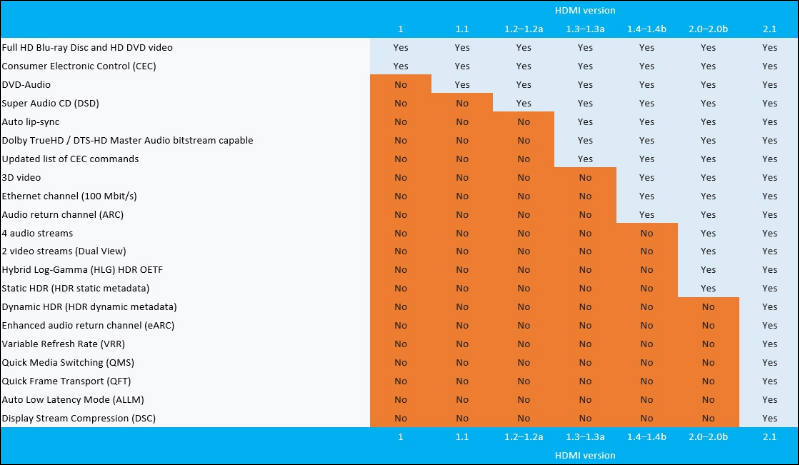
https://www.hdmi.org/download/hdmi_2_1/HDMI2.1PressRelease_EN.pdf

 sa797.jpg799 x 465 - 55K
sa797.jpg799 x 465 - 55K -
All NVidia upcoming 11xx GPU cards will have support for HDMI 2.1.
It'll be one of main marketing points.
-
@Vitaliy_Kiselev I just feel Nvidia will not fully support the spec, and figure ways to Gimp the full HDMI 2.1 Spec on $700+ "Consumer Cards", with partial support for 10 bit color or Fake "HDR" to retain GSync proprietary garbage... Nvidia history shows they just can't help themselves... they come from same school as Canon and Nikon, no?
Especially since Apple is ditching Open Graphics...
-
Spec on $700+ "Consumer Cards", with partial support for 10 bit color or Fake "HDR"
have no idea about any fake HDR. But 10bit limits on desktop are due to need to sell premium cards. It is old story.
-
Unfortunately, compliance testing protocols and procedures for HDMI 2.1 certification have not been announced yet for many product categories, meaning that it’s very unlikely that any 4K Ultra HDTVs available this year will carry the HDMI 2.1 connector.
And they even tell you how you do not need it due to this
The world’s still safe for you to go out and buy [today’s premium TV] products. You don’t have to panic with HDMI 2.1 coming down the pipe.
https://hdguru.com/tv-shoot-out-experts-dont-fret-over-missing-hdmi-2-1/
-
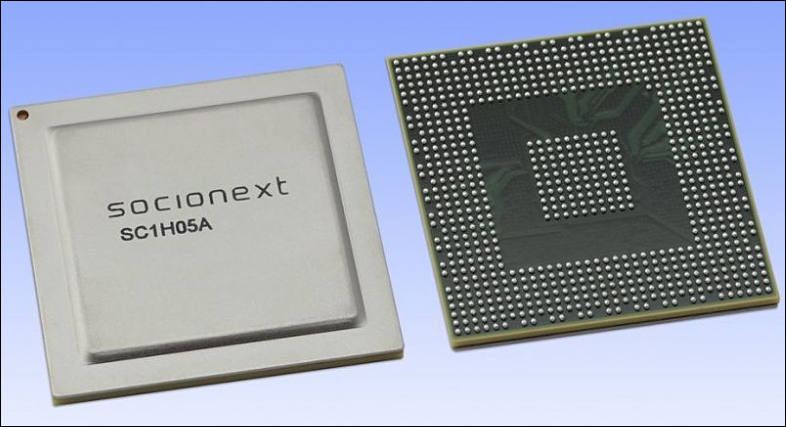
Socionext just announced that its HV5 processor - the first in the world compatible with HDMI 2.1 - would not be available before March 2019. Obviously, several TV manufacturers should take advantage of CES in Las Vegas next January to unveil their HDMI 2.1 compliant models, but in fact, these should be available later in 2019.

 sa5418.jpg786 x 427 - 50K
sa5418.jpg786 x 427 - 50K -
But it is still delays
“We are pushing to get a product ready as soon as possible. We’re particularly [anxious] to get this in front of the integrators, especially the integrators, in preparation for being future ready, because that’s what people want,” said Scott Kleinle, Legrand product management director. “We don’t have a scenario here like a smartphone, where you get a new one every six months. That’s not acceptable when you are spending the kind of money [that people putting in custom home theater systems] are spending. For people who are putting in a home theater this year, [we say] as soon as the product is ready… we are already getting inquiries. If you are an integrator, an installer or a builder, you are looking at product availability and we are already getting those questions.”
“For someone buying an 8K TV now there is no way of getting an 8K signal into it. So I am curious about that as well,” said David Meyer, CEDIA technical content director.
-
First new cables by Club 3D
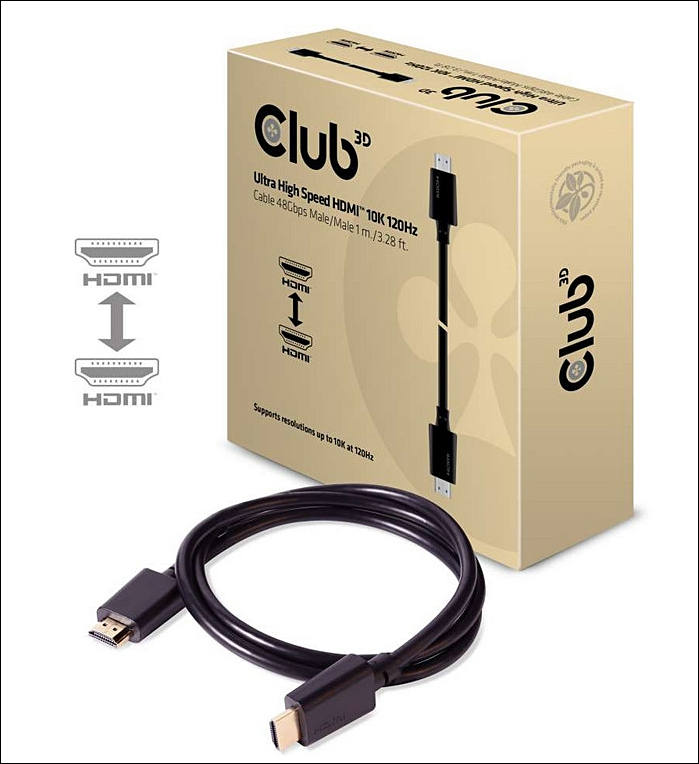
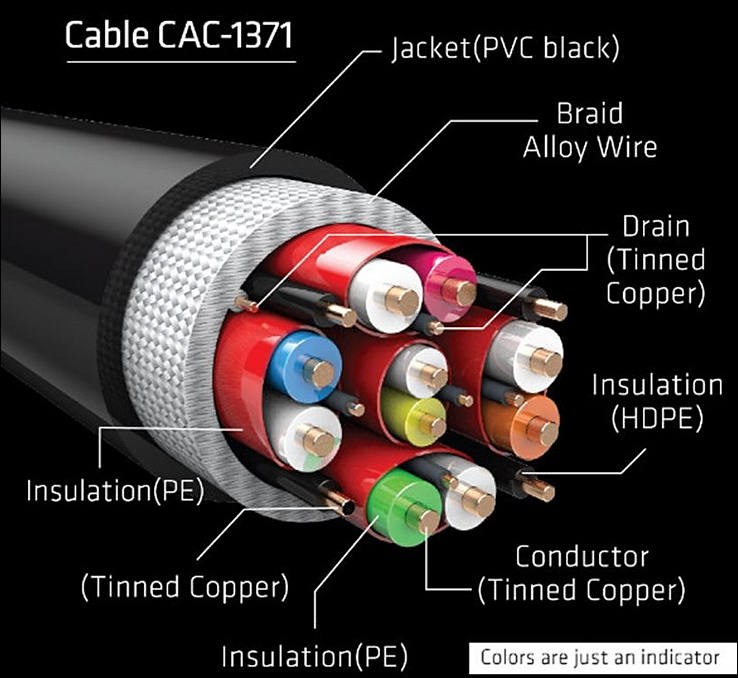

 sa5870.jpg699 x 764 - 57K
sa5870.jpg699 x 764 - 57K
 sa5871.jpg738 x 678 - 73K
sa5871.jpg738 x 678 - 73K -
The HDMI 2.1 Specification was released in November 2017 and manufacturers of several products including semiconductors, TVs, AVRs, soundbars, and game consoles have made announcements on upcoming releases supporting the specification. HDMI® Licensing Administrator, Inc. (HDMI LA) reports that CES 2019 will see many more announcements covering a broad range of product categories.
"In one short year after the launch of the HDMI 2.1 specification, consumer electronics companies have launched innovative products improving the gaming experience, 8K displays and cinema quality audio for the home theater," said Rob Tobias, CEO and President of HDMI LA. "Because of the ongoing evolution of the HDMI interface, HDMI technology continues to be the universal interface for consumer electronics products."
HDMI LA also reports that almost 1 billion HDMI-enabled devices are projected to ship in 2019, amounting to eight billion devices shipping since the release of the first HDMI specification in 2002.
HDMI 2.1 Specification "Feature Showcase" at CES in the HDMI LA booth South Hall 1 #20208.
Following the release of the HDMI 2.1 specification, manufacturers are working on bringing new innovative products to market featuring the specification's new features. The HDMI LA booth will have several companies showcasing consumer experiences driven by those features including:
- Ultimate home theater with UHD 8K TV, high bitrate audio from Enhanced Audio Return Channel (eARC) and demonstrating 48G Ultra High Speed Bandwidth
- Enhanced gaming with a game console and 4K TV supporting Variable Refresh Rate (VRR) and Auto Low Latency Mode (ALLM) for smooth lag-free and fluid gameplay
- Dynamic HDR 4K TV supporting high bitrate color and Rec. 2020 with wider color gamut picture
- Ultra High Speed HDMI Cable prototypes from multiple manufacturers supporting 48G bandwidth
"The launch of the HDMI 2.1 Specification enables manufacturers to bring more immersive and dynamic experiences to consumers, and I invite everyone to come by the booth to see the demos," said Robert Blanchard of Sony Electronics, president of the HDMI Forum. "This is a time when the 94 Forum Member companies can celebrate the successful release and implementation of the specification that they worked so hard to deliver."
HDMI LA Booth Hosts the Annual HDMI Tech Zone
Also on display will be the latest brands representing the Premium HDMI Cable Certification Program, which includes over 100 participating HDMI Adopters representing several hundred major brands and resellers in the U.S., Asia and Europe. Premium HDMI Cables are required to be tested and certified only at HDMI Authorized Test Centers (ATCs) and display the authentication anti-counterfeiting Premium HDMI Cable Label.
Additionally, several HDMI adopters will be in the HDMI Tech Zone demonstrating their HDMI test equipment, testing services and active optical cables and solutions.
Available at the booth will be representatives of HDMI LA and to make an appointment, please contact Val Robbins at vrobbins@hdmi.org, or our media relations team listed below.
-
Nice breakdown
-
2019 Samsung and LG TV Supported HDMI 2.1 Features By Model Series:
High Frame Rate Video
High Frame Rate (HFR) capability will allow high resolution video signals at higher than 24 and 30 fps rates. The new faster frame rates like 4K/120 fps and 8K/60p should enable sending live high-resolution video of fast-action sporting events in crystal clear, smooth motion resolution with minimal pixelization and blurring.
Samsung TVs
Samsung TV models in the 8K Q900R series will support 8K video at a HFR of up to 60 fps through HDMI 2.1 connections. Those who bought a Samsung 8K Q900 last year, will be able to get a complimentary upgrade of a board in the set's OneConnect Box (installed professionally) to accommodate 8K HFR over HDMI 2.1, Samsung said.
In 2019, only the 4K Q90 and the 8K Q900R QLED TV series will support High Frame Rate (HFR) 4K Ultra HD video (4K/120 fps) in 2019. Models in the Q60, Q70, Q80, Q90 and Q900 series and the 9500, 9000 and 8600 Series NanoCell TVs will also be able to do HFR 120 fps at 2K and 2.5K resolution (2K/120 fps, 2.5K/120 fps).
LG TVs
LG OLED TV models in the W9, E9, C9 Series and LG NanoCell LED-LCD TVs in 9500 and 9000 Series will support 4K HFR over both HDMI 2.1 and USB inputs. Models in the NanoCell 8600 Series will support HFR only through USB input. This is to be added via a forthcoming firmware update.
Variable Refresh Rate
Variable Refresh Rate (VRR) is a standardized system for TVs to synchronize the display with a gaming console or PC. Xbox One S and One X were the first devices to support VRR over HDMI.
Samsung TVs
All Samsung QLED TV series (Q60, Q70, Q80, Q90 and Q900R and the RU8000 Series edge-lit 4K LED-LCD TV Series will support both VRR and AMD's proprietary FreeSync (a system like VRR that maintains perfect synchronization between the display and a PC or console even as a game's frame rate fluctuates) at up at up to 120Hz. FreeSync is supported by Xbox One S and One X consoles.
LG TVs
LG's W9 Series 4K OLED TV series will not support VRR neither will 8600 Series LG NanoCell TV models nor 9000 other than the 65 and 55 inch screen sizes, which will.
ALLM
Auto Low Latency Mode (ALLM) is an HDMI feature specified in version HDMI 2.1 that allows a gaming console such as the XBox One S or XBox One X automatically control all connected compatible components in an HDMI chain, including an AV receiver and TV set, to enter a game mode or low-latency mode without requiring the user manually go into the TV settings to make the change.
Samsung TVs
Samsung supports ALLM through HDMI on all of its mid-level and higher-end 4K Ultra HD television series including all 2019 QLED TVs as well as the RU7 and RU8 Series 4K edge-lit LED-LCD TVs.
LG TVs
LG supports ALLM through HDMI on all of its 2019 4K OLED TV and 2019 4K NanoCell TV Series models.
Dynamic HDR Metadata (SMPTE 2094)
Dynamic HDR Metadata are instructions carried through number of HDR profiles (Dolby Vision, HDR-10+ etc.) transmitted by a source component to a supporting television telling the display how to present brightness, contrast and color levels on a scene-by-scene or frame-by-frame basis to produce varying levels of high dynamic range through out the course of movie or program.
Samsung
All 2019 Samsung QLED TVs and RU8 Series 4K Ultra HDTVs support Dynamic Metadata via HDMI for the HDR10+ profile.
LG
All 2019 LG 4K OLED TVs and 2019 4K NanoCell LED-LCD TVs support Dynamic HDR Metadata via HDMI for the Dolby Vision HDR profile.
-
Compatible EU models
- 2019 year
- LG Oled 2019 : B9, C9, E9, W9 and Z9.
- LG LCD 2019 : SM90, SM95, SM98 and SM99.
- Samsung Qled 2019 : Q950R
- Sony LCD 2019 : ZG9 8K
- 2020 year
- LG Oled 2020 : BX, CX, GX, WX and ZX.
- LG LCD 2020 : UN85 (65 to 86"), NANO85 (49 to 65"), NANO90 (55 to 86"), NANO95 8K, NANO97 8K and NANO99 8K.
- TCL LCD 2020 : X915 8K
- Samsung Qled 2020 : Q70T, Q80T, Q90T, Q95T, Q800T, Q900TS and Q950TS.
- Sony LCD 2020 : XH9005/XH9096 and ZH8 8K.
- 2019 year
-
License of HDMI became something similar to USB - HDMI 2.0 is not available for license
What is HDMI 2.1? It is the latest HDMI specification from the HDMI organization. Besides higher bandwidth, it offers features like eARC, VRR, and ALLM. Some features are optional – you may even see some of them on HDMI 2.0 chipsets.
However, you cannot conclude that "HDMI 2.1 support" in a given TV or player/console will give you all features. You must check each one individually.
"HDMI Specification 2.1 is the most recent update of the HDMI specification and supports a range of higher video resolutions and refresh rates including 8K60 and 4K120, and resolutions up to 10K. Dynamic HDR formats are also supported, and bandwidth capability is increased up to 48Gbps," explains the HDMI organization (emphasis ours).
Now, some people have taken this to mean that HDMI 2.1 = 48Gbps. Anything less is, allegedly, not "full", "real", a "limitation" or whatever word has been used this year. Is that correct? It is not. It is perfectly normal for a system to scale according to its capabilities. If it did not, your products would generally be a lot more expensive. There is probably a good car analogy somewhere in here.
Now HDMI 2.1 is listed for 99% of modern TVs, just lot of features are missing :-)
https://www.theverge.com/2021/12/13/22833233/hdmi-2-1-fake-marketing-brand-frl-vrr-allm-bandwidth
https://www.flatpanelshd.com/news.php?subaction=showfull&id=1606135005
Howdy, Stranger!
It looks like you're new here. If you want to get involved, click one of these buttons!
Categories
- Topics List23,987
- Blog5,725
- General and News1,358
- Hacks and Patches1,152
- ↳ Top Settings33
- ↳ Beginners255
- ↳ Archives402
- ↳ Hacks News and Development56
- Cameras2,362
- ↳ Panasonic991
- ↳ Canon118
- ↳ Sony156
- ↳ Nikon96
- ↳ Pentax and Samsung70
- ↳ Olympus and Fujifilm100
- ↳ Compacts and Camcorders300
- ↳ Smartphones for video97
- ↳ Pro Video Cameras191
- ↳ BlackMagic and other raw cameras116
- Skill1,961
- ↳ Business and distribution66
- ↳ Preparation, scripts and legal38
- ↳ Art149
- ↳ Import, Convert, Exporting291
- ↳ Editors191
- ↳ Effects and stunts115
- ↳ Color grading197
- ↳ Sound and Music280
- ↳ Lighting96
- ↳ Software and storage tips267
- Gear5,416
- ↳ Filters, Adapters, Matte boxes344
- ↳ Lenses1,579
- ↳ Follow focus and gears93
- ↳ Sound498
- ↳ Lighting gear314
- ↳ Camera movement230
- ↳ Gimbals and copters302
- ↳ Rigs and related stuff273
- ↳ Power solutions83
- ↳ Monitors and viewfinders340
- ↳ Tripods and fluid heads139
- ↳ Storage286
- ↳ Computers and studio gear560
- ↳ VR and 3D248
- Showcase1,859
- Marketplace2,834
- Offtopic1,320






